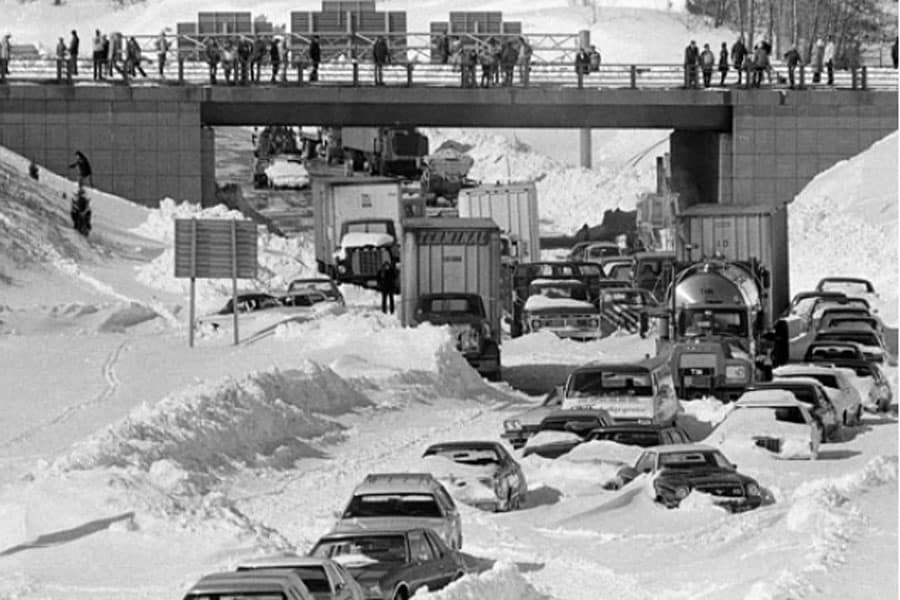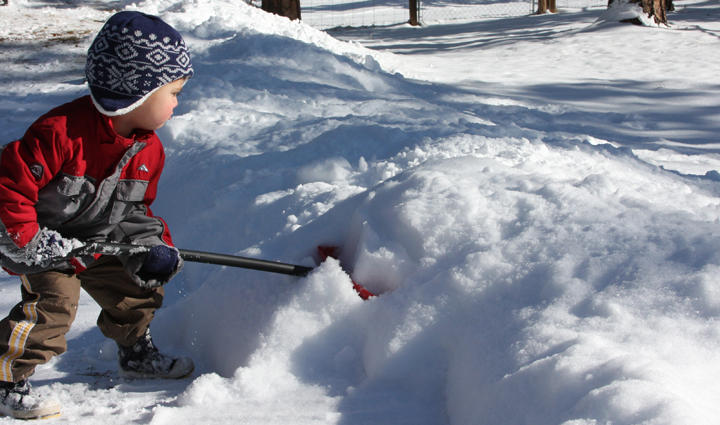
Most Milford residents understand that living along the shoreline is a blessing and a curse: colorful sunrises and cool summer breezes compete with nor’easters and raging water. In the summer we soak up the sun at local beaches and in the winter we brave icy winds sweeping in from the Sound. With February and March bearing down on us, it’s a good time to a remember some of the extreme winter weather we’ve had in the distant and not-so-distant past.
Historically, there are three big blizzards on the books that have hit Milford hard: The “King” in March 1888, the blizzard of 1978, and the blizzard of 2013, both of which took place in early February. “These are the three main blizzards we’ve had and each one had its own character,” said Bob Cox, a meteorologist with Cox Weather Services (Middletown) and a former Milford resident.
Cox explains that there is specific criteria that make a blizzard different than a heavy snowstorm. So what makes a blizzard? First, sustained or gusting winds of 35 mph or more must be active during the storm. Second, falling or blowing snow must reduce visibility to a quarter mile for three hours or more. “Technically, it doesn’t have to be snowing during a blizzard. If already-fallen snow is being blown by gusting winds keeping visibility to a quarter mile or less for three hours, we have a blizzard,” he said.
The Blizzard of 1888
The biggest and worst blizzard in Milford’s recorded history is the blizzard of 1888, a three-day monster that dumped more than 44 inches of snow, making it the blizzard to which all others are compared. Beginning on March 11, hundreds of people along the East Coast died as they tried to care for livestock on their farms or get to work during the storm so they wouldn’t lose a day’s pay. Temperatures were in the single digits and snow drifts were up to 40-feet. Shovel brigades were hired by the railroad so tracks could be cleared and supplies brought to snowbound survivors. In the days of horses and carriages, local travel was stopped until a spring thaw melted the snow a few days later.
The Blizzard of 1978
Box Cox was a freshman at Jonathan Law High School when this blizzard hit on February 6. “This storm was characterized by its hurricane-force winds. Only 24 inches of snow fell, but the blowing and gusting winds caused limited visibility and significant snow drifts.”
The blizzard also came on the heels of two storms that never really formed, so residents did not take the forecast seriously. “It also arrived later than expected and everyone went to work and school. Then it worsened quickly and everyone was dismissed at the same time,” recalls Cox. Traffic added to the disaster; drivers were stuck in the snow, could not see, and had to abandon their cars. According to a story in the (ital.)Hartford Courant, dozens of Milford firefighters were treated for frostbite after fighting a house fire in a flooded area of town.
According to Cox, advances in weather forecasting go hand-in-hand with advances in computing power, so the traffic issues probably won’t happen again in our area. “We cancel school and work a lot earlier now, thanks to more reliable forecasting,” he says.
The Blizzard of 2013
“Very few cars got stuck in this storm even though Milford got 38 inches of snow and wind was a big issue,” says Cox of the most recent big blizzard. The storm was well forecasted and most residents were prepared when it hit on February 9.
What made this blizzard unique, according to Mayor Ben Blake, was that it came on the heels of Hurricane Sandy, which hit the city at the end of October 2012. “Milford was hit with two storms of biblical proportions within a matter of months, but in both situations the community came out and helped their neighbors.” Reminiscent of the shovel brigades that cleared the railroad tracks in the Blizzard of 1888, Milford residents cleared city and neighborhood sidewalks and driveways to help Public Works crews move the snow.
Milford has survived three blizzards in the last 125 years which make the odds for another one to hit this winter pretty slim. Frozen we may be, but snowed in for several days, probably not this year!




